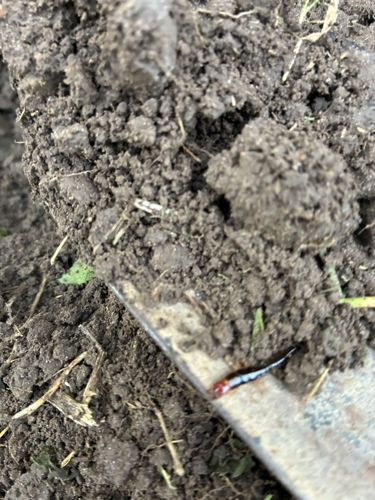Centipede
Scientific Name: Class Chilopoda (various genera and species, e.g., Geophilus, Lithobius)
Order & Family: Order Chilopoda (Centipedes) - It is difficult to determine the exact family from the image, but common families include Geophilidae (soil centipedes) or Lithobiidae (stone centipedes) based on the elongated, worm-like body.
Size: Dependent on species, but typically range from 2 cm to 15 cm (0.8 to 6 inches) in length. Some tropical species can exceed 30 cm (12 inches).

Natural Habitat
Centipedes prefer moist, dark environments. They are commonly found in soil, under rocks, logs, leaf litter, rotting wood, and within garden beds. They can also be found in basements, crawl spaces, and other damp indoor areas.
Diet & Feeding
Centipedes are carnivorous, predatory arthropods. Their diet primarily consists of insects, spiders, and other small invertebrates. Larger species may occasionally prey on small vertebrates like lizards or rodents.
Behavior Patterns
Centipedes are primarily nocturnal predators. They are fast-moving and will use their fangs (forcipules) to inject venom into their prey. They typically hide under rocks, logs, leaf litter, or in soil crevices during the day. Reproduction involves the male depositing a spermatophore for the female to pick up. Females lay eggs and often guard them until they hatch.
Risks & Benefits
Potential Risks: Centipedes can bite humans, delivering venom through their forcipules. While the bite is generally not life-threatening, it can be painful and cause localized swelling, redness, and numbness. Allergic reactions are rare but possible. Potential Benefits: Centipedes are beneficial predators in gardens and ecosystems as they help control populations of various pests like slugs, snails, termites, and other nuisance insects.
Identified on: 8/9/2025